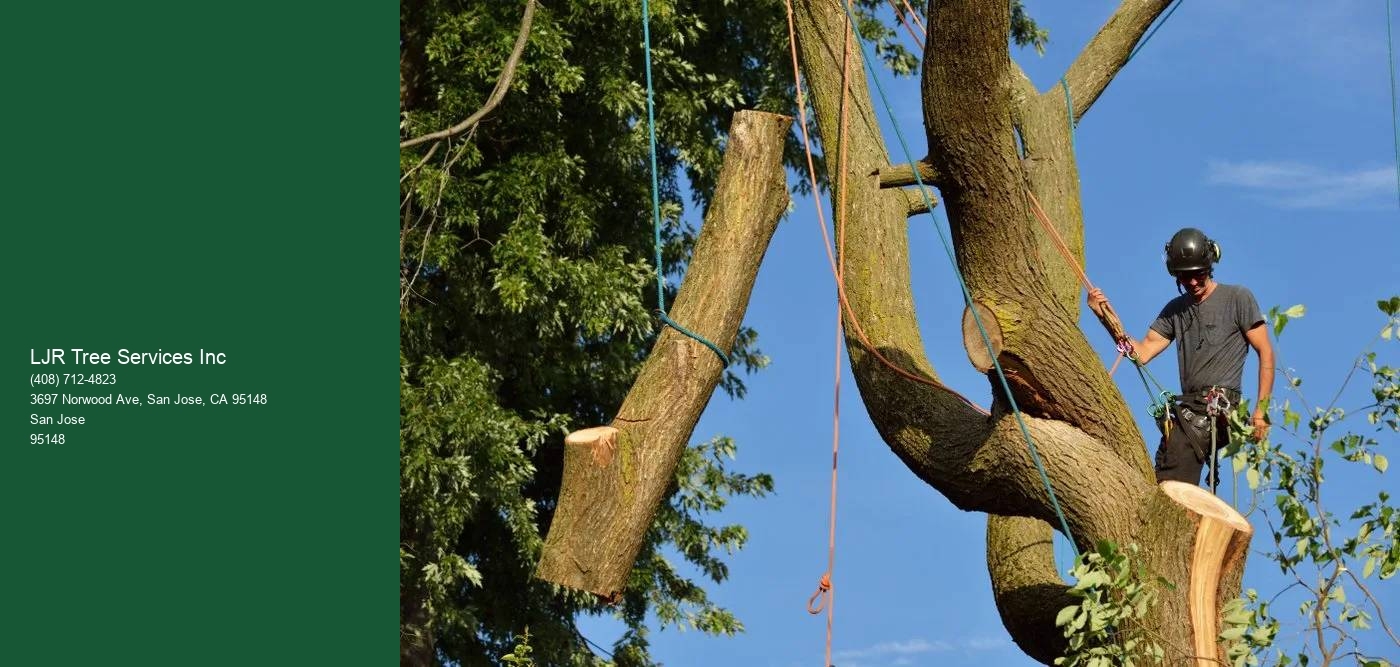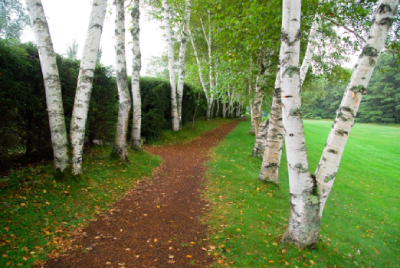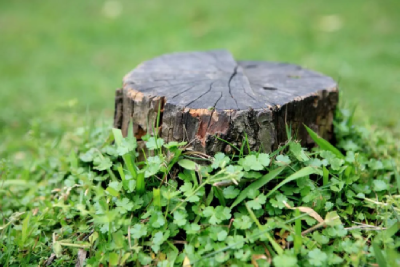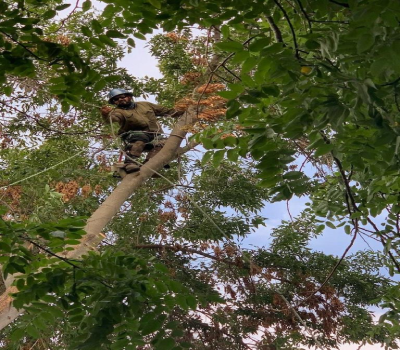

Early Detection and Prevention: Tree health assessments serve as an early warning system, enabling arborists and tree care professionals to identify signs of distress before they escalate. Timely detection allows for prompt intervention, preventing the spread of diseases and the infestation of pests, ultimately safeguarding the tree and its surroundings.
Ecosystem Services Preservation: Healthy trees are vital contributors to our ecosystem services. They purify the air by absorbing pollutants, release oxygen, and act as carbon sinks, mitigating the impacts of climate change. Assessing and maintaining tree health ensures these essential services persist, benefiting the environment and human well-being.
Aesthetic and Recreational Value: Beyond their ecological significance, trees enhance the visual appeal of landscapes and provide recreational spaces for communities. Regular health assessments contribute to the longevity and vibrancy of trees, maintaining their aesthetic value and preserving green spaces for generations to come.
Property and Human Safety: Neglected tree health poses potential risks to property and human safety. Assessments help identify weak or hazardous branches, ensuring timely pruning or removal to prevent accidents. Tree health assessments provide a secure environment for property and individuals by proactively addressing safety concerns.
Enhanced Tree Longevity: Just as regular health check-ups promote human longevity, routine tree health assessments extend the lifespan of our arboreal companions. Through proactive care, trees are better equipped to withstand environmental challenges, resist diseases, and thrive for decades, if not centuries.
Cost-Efficient Management: Investing in tree health assessments is a cost-effective strategy in the long run. Addressing issues early on reduces the need for expensive emergency interventions or, in extreme cases, tree removal. This proactive approach to tree care aligns with sustainability principles and responsible environmental stewardship.
In the intricate dance of nature, tree health assessments emerge as a choreographer, orchestrating the harmony between trees and their environment. As we uncover the manifold benefits of these assessments, it becomes clear that they are not merely a check-up for our arboreal friends but a vital lifeline for the health of our planet. Let us recognize and embrace the value of regular tree health assessments as we strive to protect and nurture the green heartbeat of our world.
Methods Of Tree Health Assessment: In the grand tapestry of our ecosystems, trees stand as stalwart guardians, contributing immeasurably to the balance and beauty of the natural world. Ensuring the well-being of these arboreal giants necessitates a deeper understanding of their health. Enter the realm of tree health assessments, where various methods converge to unveil the intricate stories encoded in every leaf, branch, and root. In this exploration, we embark on a journey through the practical methods employed to decipher the health of our leafy companions.
Visual Inspections: The most fundamental and accessible method involves examining the tree's physical characteristics. Arborists look for signs of vitality, such as vibrant foliage and robust growth, as well as stress indicators, including discoloration, abnormal leaf drop, or fungal presence. This hands-on approach allows immediate observations and is often the first step in assessing tree health.


Arborist Consultation: For a more nuanced evaluation, seeking the expertise of certified arborists proves invaluable. These professionals possess the knowledge and experience to assess tree health comprehensively. Arborist consultations may include thoroughly examining the tree, soil analysis, and discussing environmental factors affecting its well-being.
Soil Testing: A crucial aspect of tree health, the condition of the soil profoundly impacts a tree's ability to thrive. Soil testing involves analyzing nutrient levels, pH, and moisture content. By understanding the soil composition, arborists can recommend appropriate fertilization and irrigation strategies to ensure optimal tree health.
Advanced Technologies: In the age of technological advancement, cutting-edge tools and devices have become indispensable in tree health assessments. Tree health monitoring systems, equipped with sensors, can provide real-time data on environmental conditions, allowing for proactive management. Drones and imaging technologies offer a bird's-eye view, aiding in identifying potential issues from a unique perspective.
Resistograph and Sonic Tomography: For a closer look beneath the bark, seismograph and sonic tomography are non-invasive methods used to assess the internal structure of a tree. Resistographs measure wood density, detecting decay or cavities, while sonic tomography utilizes sound waves to create images of internal tree structures. These methods help arborists evaluate the structural integrity of trees without causing harm.
Aerial Inspections: Traditional assessments may need to be more practical in vast or challenging landscapes. Aerial inspections, often conducted using drones or other aerial vehicles, provide a comprehensive overview of tree health across large areas. This method is beneficial for assessing the health of forests or urban tree canopies.
Understanding the health of trees is paramount to their preservation. Through the amalgamation of visual inspections, arborist expertise, soil analysis, advanced technologies, and innovative imaging methods, we gain a holistic perspective on the well-being of our arboreal companions. Let us embrace these methods and refine our approach to tree health assessments, fostering a harmonious coexistence with nature.


Future Trends In Tree Health Management - As custodians of our planet, the importance of trees in maintaining ecological balance cannot be overstated. In the ever-evolving landscape of environmental science, the future of tree health management holds exciting possibilities. Technological advancements, innovative research, and community-driven initiatives shape how we perceive and care for our arboreal companions. Join us as we embark on a journey into the green horizons of tomorrow, exploring the promising future trends in tree health management.
Advancements in Technology - The integration of cutting-edge technology is revolutionizing how we monitor and manage tree health. Remote sensing, drones, and satellite imaging are becoming invaluable tools for assessing large forested areas. These technologies provide real-time data on tree conditions, allowing for swift responses to emerging threats and ensuring more precise and efficient management practices.
Disease-Resistant Tree Varieties- In the face of increasing threats from pests and diseases, researchers are actively working on developing genetically modified and naturally resistant tree varieties. These resilient species not only bolster the overall health of tree populations but also reduce the reliance on chemical interventions. The future of tree health management lies in cultivating a diverse array of trees that can withstand evolving environmental challenges.
Citizen Science and Community Engagement - The future of tree health management is intrinsically linked to community involvement. Citizen science initiatives empower individuals to contribute to monitoring tree health in their local environments. By fostering a sense of ownership and connection, communities become active participants in preserving and caring for their urban forests, creating a more sustainable and resilient green infrastructure.
Big Data Analytics - The sheer volume of data generated by environmental monitoring tools can be harnessed through big data analytics. Researchers and arborists can analyze vast datasets by employing sophisticated algorithms to identify patterns, predict potential threats, and optimize management strategies. This data-driven approach enables more informed decision-making and proactive interventions.
Climate-Responsive Management - As climate change continues to impact ecosystems, future tree health management must be adaptive and responsive. Arborists and researchers are developing strategies that consider the changing climate conditions, ensuring that tree care practices evolve to meet the challenges posed by shifting temperatures, precipitation patterns, and the prevalence of extreme weather events.
